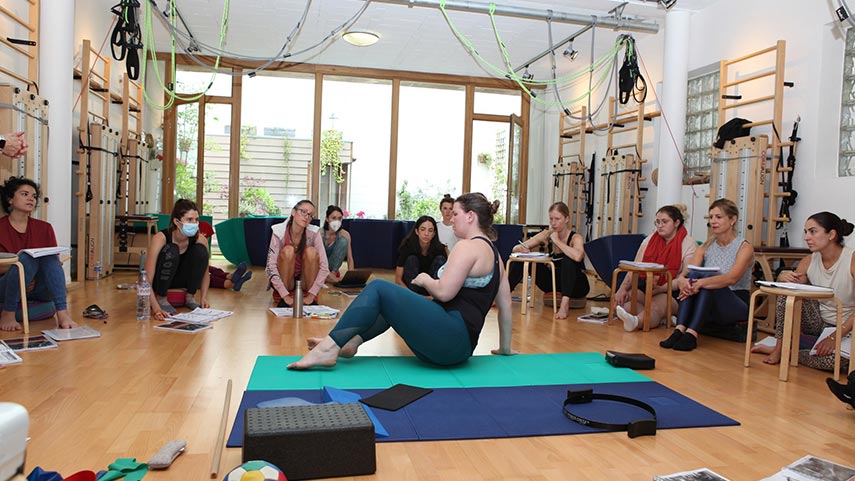From Enthusiast to Expert: How to Become a Certified Pilates Instructor
If you’ve ever found yourself falling in love with the precision, flow, and transformation that Pilates brings—and wondered how to become a Pilates instructor—you’re not alone. Many passionate practitioners find themselves called to share the method with others. But how do you go from enthusiast to certified expert?
This guide walks you through everything you need to know: how to become a certified Pilates instructor, what the process looks like, how long it takes, and how to choose the right training program.
Why Become a Pilates Instructor?
Pilates isn’t just a workout—it’s a lifestyle. Becoming a certified Pilates instructor allows you to help others move better, feel stronger, and live pain-free. It’s also a highly rewarding career path for those passionate about movement, wellness, and teaching.
As demand for qualified instructors continues to grow, many people are asking: how do I become a Pilates instructor? Whether you’re aiming to work in studios, gyms, rehab clinics, or even open your own practice, certification is the first major step.
How to Become a Pilates Instructor: The First Steps
- Build a Strong Personal Practice
Before teaching others, you’ll need a solid understanding of Pilates yourself. Most programs recommend (or require) 20–50 hours of personal practice before entering a teacher training course. This gives you the foundation in body awareness, technique, and terminology. - Research Accredited Certification Programs
To become a certified Pilates instructor, choose a program accredited by a reputable organization. Look for names like BASI, STOTT, Balanced Body, or Polestar. These are globally recognized and respected in both fitness and rehab settings. - Decide: Mat Certification vs. Comprehensive Certification
– Mat Certification focuses solely on Pilates matwork. It’s a shorter, more affordable pathway and ideal if you want to teach group classes or start small.
– Comprehensive Certification includes mat, Reformer, Cadillac, Chair, and other apparatus. It prepares you for private sessions, studio work, and clinical settings. It’s longer and more intensive—but also more complete.
How to Get Pilates Certified: Training Program Overview
Each training program varies, but most include the following elements:
- In-Person or Online Training Modules
- Practice Teaching Hours (usually 100+ hours)
- Observation Hours (watching qualified instructors teach)
- Self-Practice Hours
- Final Practical & Written Exams
You’ll be learning anatomy, biomechanics, class sequencing, cueing, modifications, and safety protocols. Don’t worry if that sounds like a lot—programs are designed to build your skills progressively.
How Long Does It Take to Become a Pilates Instructor?
One of the most common questions is: how long does it take to become a Pilates instructor? The answer depends on the certification path you choose and your schedule.
- Mat-Only Certification: 3–6 months (depending on course pace and your availability)
- Comprehensive Certification: 6–18 months (includes equipment training and more hours)
Some intensive programs offer full certification in 3–4 months, but most people complete their training while working or balancing other responsibilities. It’s important not to rush—quality matters more than speed.
How to Be a Pilates Instructor After Certification
Once certified, you’re ready to start teaching—but the journey doesn’t end there. Here’s what comes next:
- Insurance & Liability Coverage – essential before working with clients.
- CPR/First Aid Certification – often required by studios or insurance.
- Find Teaching Opportunities – start with gyms, boutique studios, or community centers.
- Keep Practicing & Learning – take workshops, attend conferences, and expand your knowledge.
The best instructors are always learning—whether it’s exploring pre/postnatal Pilates, working with injuries, or diving deeper into anatomy.
Is It Worth It?
If you’re wondering whether becoming a Pilates instructor is worth the time and cost—the answer is yes, if you’re passionate about helping people feel better in their bodies. Teaching Pilates isn’t just a job. It’s a calling, and a lifelong skill you can take anywhere.
Plus, the flexibility of this career path is unmatched. You can work part-time or full-time, in-person or online, independently or in studios. Many instructors even build niche practices in rehab, sport, or wellness.
Final Thoughts
So, how do you become a Pilates instructor? It starts with commitment. You don’t need to be perfect—you just need to be passionate, curious, and ready to learn. Whether you’re looking to teach part-time, switch careers, or deepen your own practice, getting certified in Pilates opens a door to a purposeful, dynamic, and impactful future.
Remember, the journey from Pilates enthusiast to expert isn’t about ticking boxes—it’s about building knowledge, confidence, and presence. Take the leap, invest in your education, and begin the path toward becoming a certified Pilates instructor.
Your future students—and your own body—will thank you.





